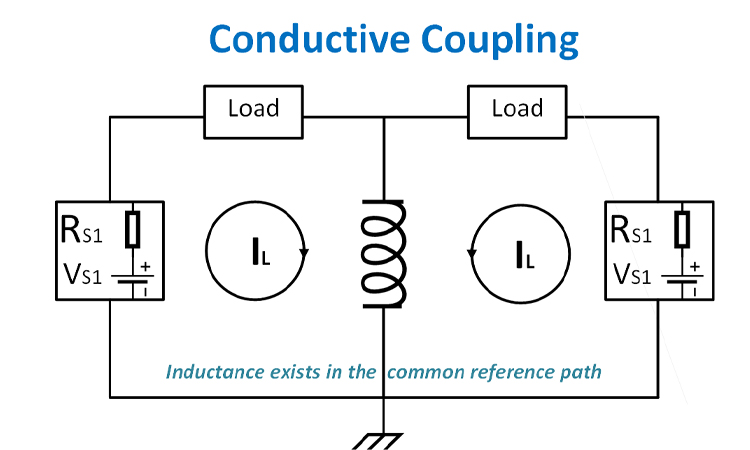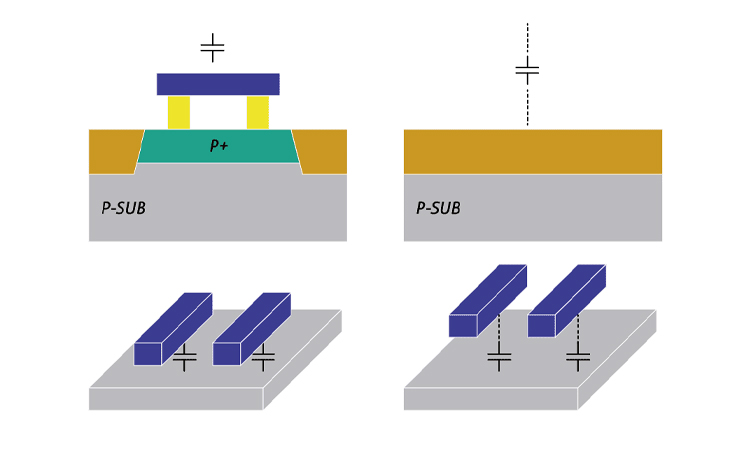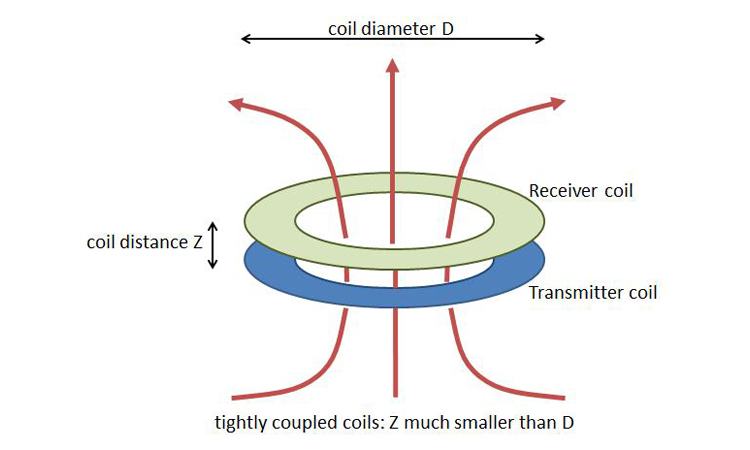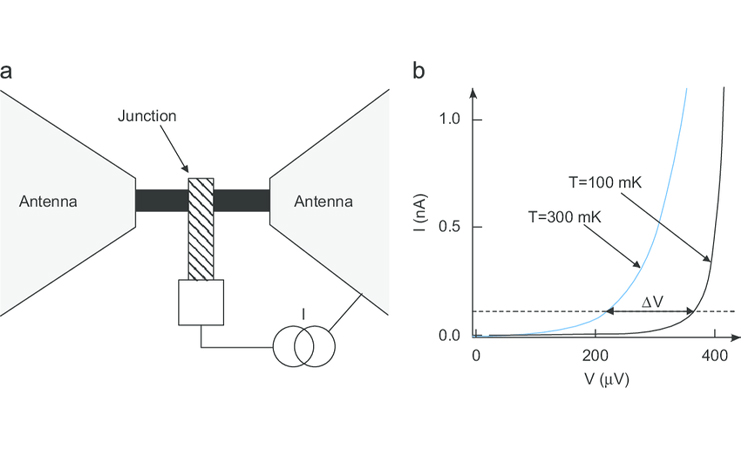Wireless power transmission allows devices to send power in an electronic network without wires. Electromagnetic coupling mechanisms happen to be suitable for wireless power transmission. Many types of electromagnetic coupling can be used in wireless power transmission. It can be inductive coupling or capacitive coupling. Let’s take a closer look at the definition of electromagnetic coupling, how it works, and its types.
Electromagnetic Coupling Definition
People call electromagnetic coupling a transformer action. It is the electromagnetic field generated by the flow of current in an energized conductor. The electromagnetic field it produces is at right angles to the conductor. The current flowing in the conductor constantly changes direction in an AC power system. This phenomenon affects the electromagnetic field around a current-carrying conductor. They expand and contract. As long as electromagnetic lines of force pass through another conductor, we can induce a voltage in that conductor. It is a simple principle of operation. This principle applies to the work of power transformers, alternators, and generators.
Another name for electromagnetic coupling is mutual inductance coupling. It means that there is mutual inductance between two circuits. A change in current in one circuit affects the other through mutual inductance. A friendly relationship exists between two or more circuit elements or electrical networks. They closely match and interact with each other between input and output. They transfer energy from one side to the other through interaction. This chain of phenomena is electromagnetic coupling. In simple terms, the coupling measures the interdependence of two entities on each other.
Electromagnetic Coupling Working Principle
Electromagnetic coupling can occur in one or more circuits. It is the response of an electromagnetic field in a circuit to such an event. They induce charges or voltages in other circuits. These charges or currents affect circuits, whether intentionally or unintentionally. They all affect the circuit. If the electromagnetic coupling is unintentionally generated, it is harmful. Electromagnetic interference is a classic example of these unintentional electromagnetic couplings.
Intentional electromagnetic coupling is often beneficial to people. Wireless power transmission is based on the principle of electromagnetic induction. This principle is associated with electromagnetic coupling. In which two circuits are coupled to produce a magnetic field. The electromagnetic field of the source circuit changes significantly. This makes the possibility of transmission between it and the load circuit. They can be transmitted by the power of the electromagnetic coupling mechanism. Their power supports the transfer from the source circuit to the load circuit. There is also no need for wires or physical contact during the transfer.
Advantages of Electromagnetic Coupling
A significant advantage of electromagnetic coupling is its ability to be invoked in the transformer action. Some AC voltage applied to the primary winding generates an alternating magnetic field in the transformer. At this point, the secondary winding appears in the alternating magnetic field. This winding will also be magnetically coupled to the primary winding. Then, an electric potential appears in the secondary winding. The benefits of electromagnetic coupling in transformer applications are many. Electromagnetic coupling enables them to achieve electrical isolation and magnetic coupling.
Electromagnetic coupling can be used in several different industries:
- Automotive field. It is generally used for charging batteries in electric vehicles.
- Aerospace field. People can use it to transfer energy to moving parts.
- Consumer electronics. It can help charge cell phones and laptops wirelessly.
- Biomedical. It is mainly used to power implantable devices.
- Industrialization. It is an effective way to deal with harsh and explosive environments.
Hazards of Unintentional Electromagnetic Coupling
Unintentional electromagnetic coupling usually brings harm to people. It generates electromagnetic interference. Devices and systems are vulnerable when subjected to electromagnetic interference. They may become degraded or inoperable. For example, there have been accidents in the history of the United States due to electromagnetic interference. Electromagnetic interference caused the accidental shutdown of the nuclear power plant.
Unintentional electromagnetic coupling can cause crosstalk in the source files of a device in a certain state. This state is generally conducting or radiating electromagnetic waves. They can simultaneously interfere with components in the same circuit or adjacent circuits. In specific circuits, this coupling has less impact than RF circuits. This specific circuit mainly refers to DC circuits and low-frequency circuits. Unintentional electromagnetic coupling at high frequencies is the opposite. It will have a big impact. Interference sources and victim components will radiate electromagnetic signals to the surrounding area. They conduct unwanted electromagnetic signals to nearby components, through transmission lines.
Electromagnetic Coupling Type
Conductive Coupling

Conductive coupling is the coupling method that transmits electromagnetic nuisance to the interfered equipment through a conductive path. Electromagnetic noise exists here in the form of voltage or current. The noise will be coupled to the interfered equipment through metal wires or passive components. Conductive coupling is one of our common interference paths. Conducted coupling can be further divided into the following two types of coupling.
Direct conductive coupling is a direct interference signal through the basic components coupled to the type of interference equipment. These fundamental components can be wires, metal bodies, resistors, capacitors, or transformers.
Common impedance conducted coupling refers specifically to some noise sources and signal sources with a common impedance conducted coupling. The coupling will occur when the current of two circuits flows through a common impedance. Due to poor grounding, the voltage drop of one current in the impedance will impact the other circuit. Common impedance coupling generally has two types: common ground and power impedance. The first is power supply noise coupled through the common ground impedance generated by the common safety ground wire of the equipment. It can also be through the common ground impedance of the network. The second is the noise coupled through the common power impedance of the power supply generated by the common power impedance. These power supplies are AC and DC.
Capacitive Coupling

Capacitive coupling mainly uses the capacitance between circuits to transfer energy. It transfers the AC signal from one circuit to another through capacitance. Variations in coupling capacitance and voltage also affect electromagnetic interference.
Inductive Coupling

It is also called magnetic coupling. This magnetic field changes when the source of interference is present as a power source in two mutually inductive circuits. It is when the magnetic field generated by the current causes interference with neighboring signals through magnetic coupling. Inductive coupling is the operating principle of many instruments. These include instruments such as transformers, metal detectors, and induction cookers.
Radiation Coupling

Radiation coupling refers to the interference source will be interference through the form of space radiation to the interfered equipment. The interferer and the interfered device are like two radio antennas. The interfered equipment receives the electromagnetic waves radiated from the interfering source. The disturbed device will be harmed and affect its normal operation.
The different types of interference sources include the following:
| Interference source type | Interference source source |
| Radio Frequency Emission | Wireless communication systems (radio, TV, wireless phone)Radar |
| Electronic equipment | High-power industrial equipment (induction furnace, welding machine)Office equipment (computers, photocopies)Discharge lamps (neon, fluorescent)Electromechanical components (relays, contactors) |
| Power System | Transmission and distribution systemsElectric Transportation System |
| Other | LightningElectrostatic Discharge (ESD)Electromagnetic Nuclear Pulse (EMNP) |
What is the Difference between Inductive Coupling and Electromagnetic Coupling?
Inductive coupling is a type of electromagnetic coupling that occurs when a changing magnetic field induces an electric current in a nearby conductor. In other words, inductive coupling involves the transfer of energy or information between two objects through a magnetic field. Electromagnetic coupling, on the other hand, refers to the transfer of energy or information between two objects through electric and magnetic fields. While inductive coupling is a specific type of electromagnetic coupling, electromagnetic coupling can also occur through other mechanisms, such as capacitive coupling and electromagnetic radiation. In summary, inductive coupling is a subset of electromagnetic coupling that specifically involves the transfer of energy or information through a magnetic field.
Types of Electromagnetic Coupling that can be Used in Wireless Power Transmission
Many types of cell coupling can be used in wireless power transmission. Here, we focus on two types of wireless power transfer, near-field and far-field. And the electromagnetic coupling mechanism they would use.
Near-Field Wireless Power Transmission
Most people refer to near-field wireless power transmission as non-radiative power transmission. Near-field electromagnetic coupling for power transmission usually occurs only over short distances. The electromagnetic coupling can be either inductive or capacitive in this transmission environment. Inductively coupled time-varying magnetic fields result in wireless power transfer in the induction coil. Capacitive coupling has a time-varying electric field. Time-varying electric fields can be applied to wireless power transfer between metal electrodes.
There is another name for the use of inductive coupling in near-field wireless power transfer. People often call it inductively coupled wireless power transfer. Inductive coils are used to send power in inductively coupled wireless power transmission. The coils send power between the power source and the load circuit. And in which two coils send them. These two coils are the transmitter coil and the receiver coil. There is a magnetic coupling between these coils. It allows the time-varying magnetic field in the transmitter coil to sense the voltage in the receiver. The coupling coefficient between the coils also affects the efficiency of power transfer. Tight coupling makes power transfer faster and more efficient than loosely coupled inductive coils.
The key parameter for capacitively coupled wireless power transmission is coupling capacitance. Capacitively coupled wireless power transmission allows two metal electrodes for power transfer. The time-varying electric field in the transmitter electrode also induces a voltage in the receiver electrode.
Far-Field Wireless Power Transmission
Far-field wireless power transmission primarily uses electromagnetic radiation. The electromagnetic radiation is coupled to the receiver at a greater distance. This far-field electromagnetic coupling is known as a powerful beam or radiation technology.
What are the Applications of Electromagnetic Coupling?
Electromagnetic coupling has many applications, especially in communication and data transfer. It is commonly used in medical devices such as MRI machines, satellites, mobile phones, electric motors, and electric generators. Additionally, you can use it in low-power applications such as consumer electronics devices, domestic appliances, and consumer wearables.
Electromagnetic coupling is a very important presence for people. It helps people to make better use of wireless power transmission. However, the unintentional electromagnetic coupling can cause interference with the normal operation of many devices and systems. Knowing this paper helps companies to plan to mitigate or shield the coupling.
General Q&A About Electromagnetic Coupling
-
What is electromagnetic coupling?
Electromagnetic coupling transfers energy or information between two or more objects through electric and magnetic fields. It can occur between objects nearby or at a distance.
-
How does electromagnetic coupling work?
Electromagnetic coupling works through the interaction of electric and magnetic fields. When electrically charged particles move, they create a magnetic field; when a magnetic field changes, it creates an electric field. These fields can interact with other objects that have a charge or are capable of having a charge, causing energy or information to be transferred.
-
What is the difference between electromagnetic coupling and electromagnetic induction?
Electromagnetic coupling and electromagnetic induction are closely related but different concepts. Electromagnetic coupling refers to transferring energy or information between two objects through electric and magnetic fields. In contrast, electromagnetic induction specifically refers to generating an electromotive force in a conductor by a changing magnetic field.
-
How can electromagnetic coupling be measured?
Electromagnetic coupling can be measured using oscilloscopes, spectrum analyzers, and near-field probes. These instruments can detect and analyze electromagnetic fields’ strength, frequency, and direction.
-
How does electromagnetic coupling affect electronic devices and systems?
Electromagnetic coupling can affect electronic devices and systems by causing interference, noise, or other unwanted effects. This can lead to errors, malfunctions, or reduced electronic device and system performance. Proper design and shielding can help minimize the impact of electromagnetic coupling on electronic devices and systems.








